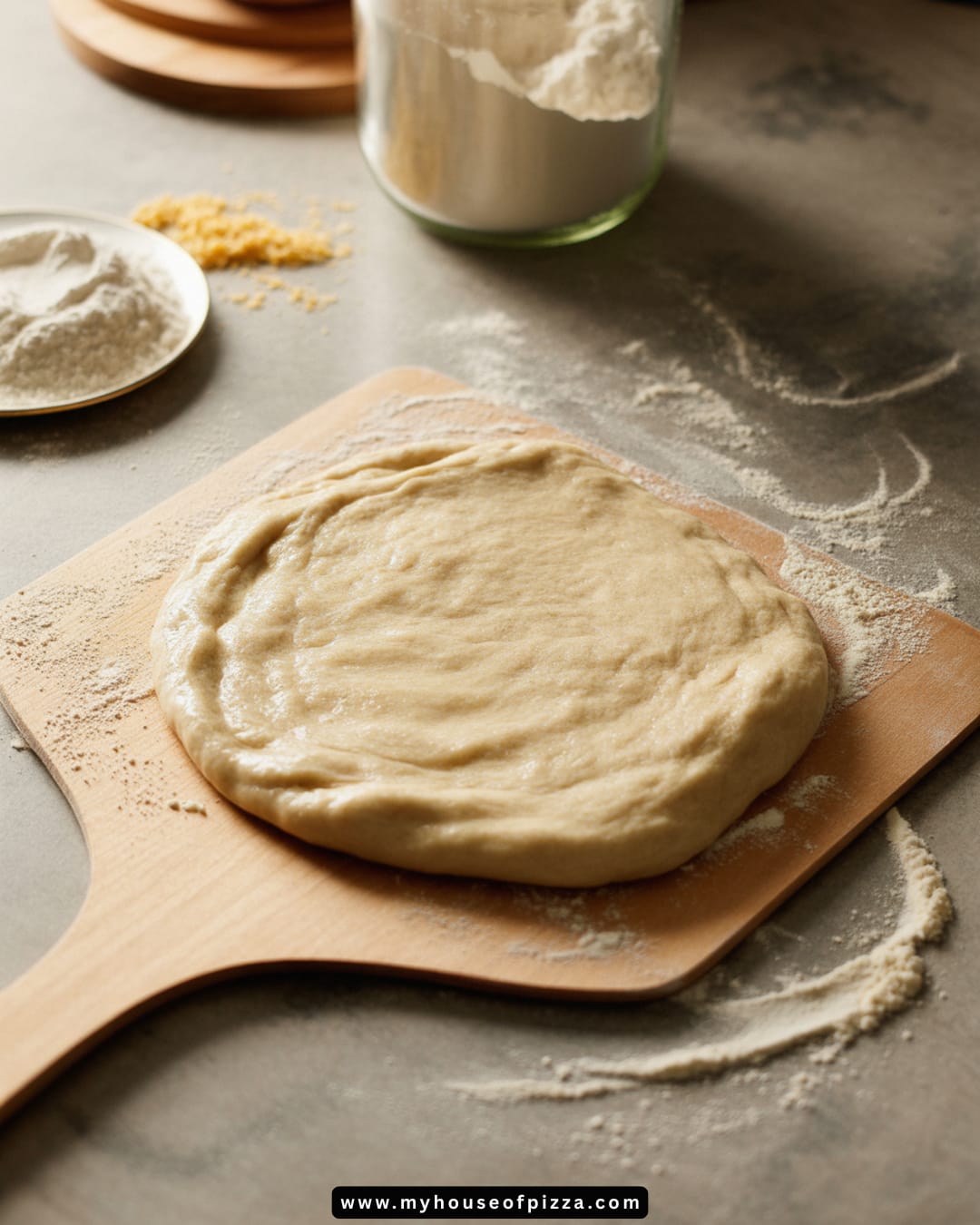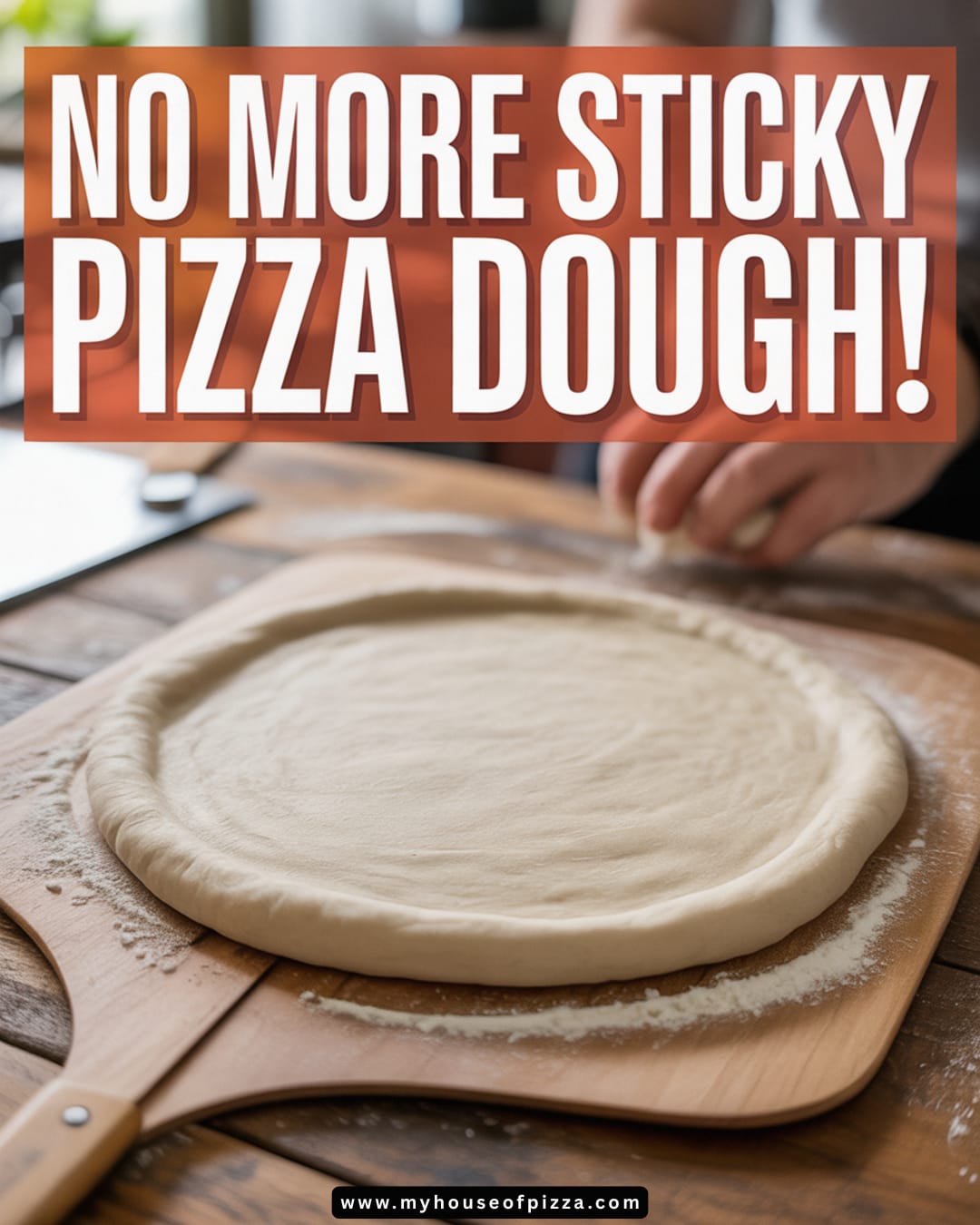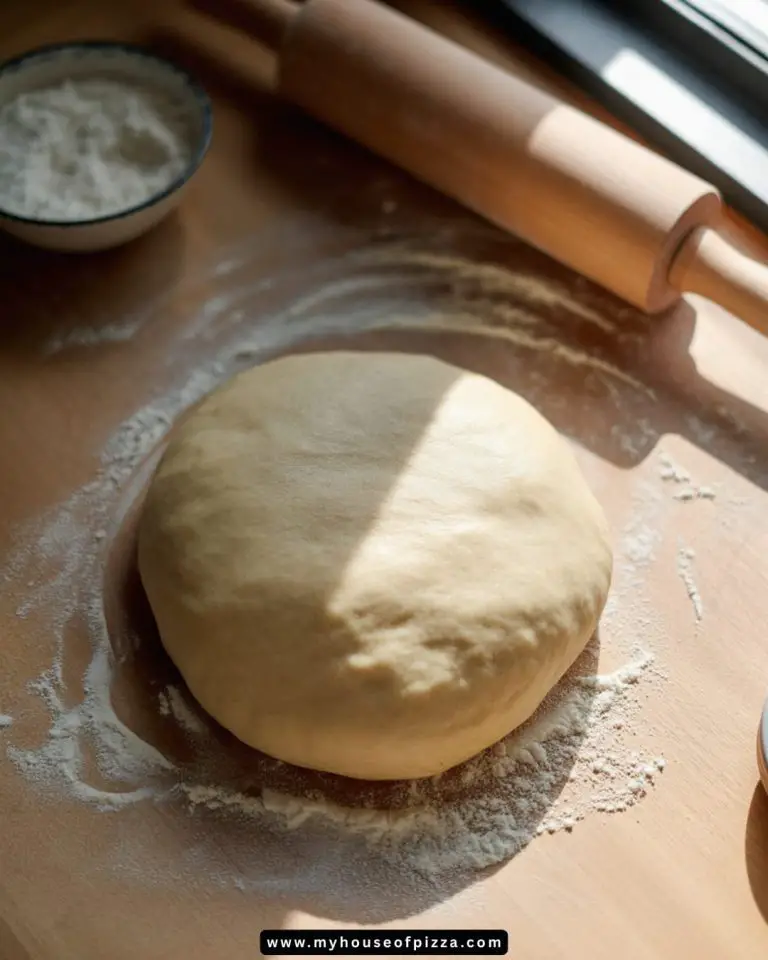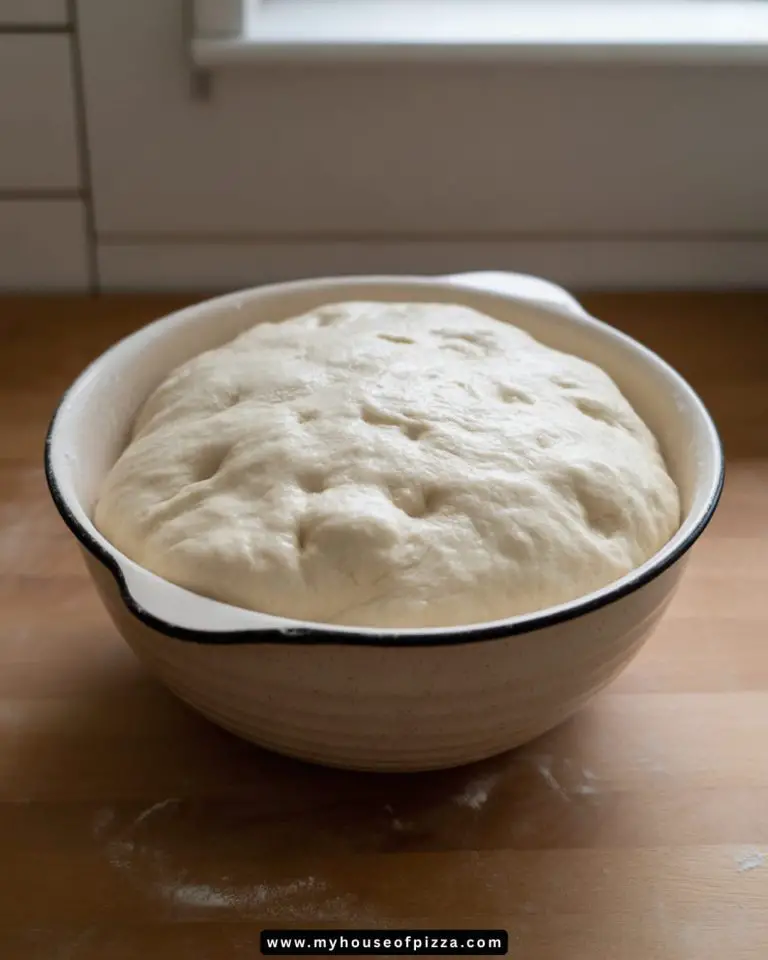Stop Pizza Dough Sticking: Easy Peel Fixes
There’s nothing more frustrating than prepping the perfect pizza, only to have the dough stick to the peel right before baking. You’re ready for that crispy crust, but instead you end up with a torn, bunched-up mess.
Luckily, some simple tricks and a few easy swaps can keep your pizza dough moving smoothly every time. Whether you’re a weekend pizza maker or just want to avoid another sticky situation, these fixes will help you get your pizza onto the stone (and off the peel) without a hitch.
Why Pizza Dough Sticks to the Peel
Sticky dough is a common problem, especially if you’re using a high-hydration recipe or working in a warm kitchen.
When dough is too wet or soft, it can glue itself to the peel. Sometimes, it’s the flour you’re using or how long you let the dough sit out.
Even the type of peel matters. Wooden peels hold flour better, while metal peels can be a little more slippery but less forgiving with sticky dough.
Semolina Flour: The Secret Weapon
Semolina flour is a game changer for pizza peels. Its coarse texture acts like tiny ball bearings, letting your pizza slide off the peel with ease.
Unlike regular flour, semolina doesn’t absorb as much moisture from the dough. This means it won’t gum up or turn pasty while you’re assembling your pizza.
Sprinkle a generous layer of semolina on your peel before stretching your dough. You can even use a mix of semolina and regular flour for extra insurance. The pizza will move easily, and you won’t taste any grit or bitterness.

Why You Might Want to Skip Cornmeal
Cornmeal is a classic choice for some, but it comes with drawbacks.
When cornmeal burns in a hot oven, it can give your crust a bitter flavor and a gritty texture. This isn’t what you want from a homemade pizza.
Semolina or even a light dusting of regular flour will do the job better. They keep the dough moving without adding unwanted flavors.
Dough Hydration: What It Means and Why It Matters
Hydration is just a fancy way of saying how much water is in your dough. Higher hydration doughs (65% to 70% water) are stretchier and give you a chewier crust.
But here’s the catch: the wetter the dough, the stickier it gets. If you’re using a high-hydration recipe, you’ll need to be extra careful with your peel prep.
Resting the dough in the fridge can help. Cold dough is firmer and easier to handle, so try letting your dough rest overnight before baking. This not only makes it less sticky, but also improves the flavor.
Quick Reference: Common Peel Fixes and Their Effects
| Fix/Ingredient | How It Works | Pros | Cons |
|---|---|---|---|
| Semolina Flour | Granules act as ball bearings between dough and peel | Prevents sticking, no burnt taste | Slightly coarser texture |
| Regular Flour | Creates a dry barrier | Easy to find, works in a pinch | Can absorb moisture, get pasty |
| Cornmeal | Granules create a barrier | Traditional, easy to sprinkle | Can burn, bitter/gritty flavor |
| High-Hydration Dough (65-70%) | Makes dough elastic and chewy | Great texture, open crumb | Stickier, harder to handle |
| Resting Dough in Fridge | Firms up dough, reduces stickiness | Easier to handle, better flavor | Requires planning ahead |
Tips for a Smooth Pizza Launch
A little shake goes a long way. Before you add toppings, give your peel a gentle shake to make sure the dough isn’t sticking. If it moves freely, you’re good to go.
Once your pizza is topped, do another quick shake right before you slide it into the oven. This double-check helps catch any sneaky spots that might have stuck down while you were working.
Give the dough a final quick stretch to make sure it’s the right size and shape. This also helps loosen any spots that might have started to grab the peel.
Work quickly when topping your pizza. The longer the dough sits on the peel, the more likely it is to stick. Have your sauce, cheese, and toppings ready to go before you start.
More Tricks for Non-Stick Success
If you’re still having trouble, try using less sauce or fewer wet toppings. Extra moisture can seep through the dough and make it stick.
Keep your peel clean and dry. Any leftover dough or sauce from a previous pizza can cause sticking the next time around.
If you’re using a metal peel, you might need a bit more flour or semolina than with a wooden peel. Metal peels are slick, but they don’t hold flour as well.
Don’t be afraid to practice. The more you work with pizza dough, the better you’ll get at spotting sticky spots and fixing them before it’s too late.
Avoid Sticky Pizza Peels For Good
Nobody wants to lose a pizza to the peel. With a little semolina, some smart dough handling, and a couple of quick shakes, you can make sure your pizza lands perfectly in the oven every time.
Remember, a few small changes make a big difference. Next time you’re ready to bake, you’ll know exactly how to keep that dough moving. Enjoy every crisp, chewy bite.




